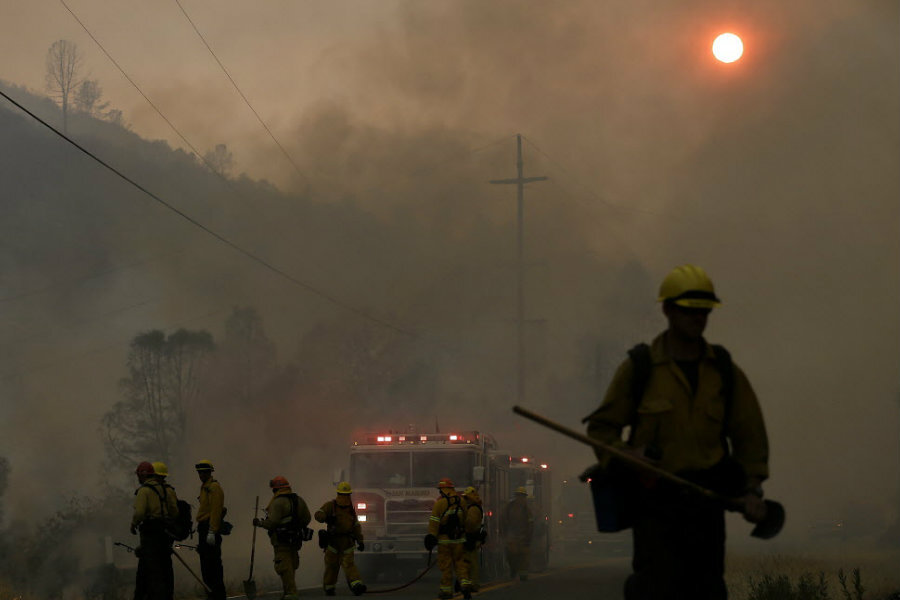California wildfires burn through federal budget
The West Coast continues to burn.
The fiercest of the wildfires raging through California roared through its fifth day Sunday, torching about 54,000 acres east of Lower Lake, a town 110 miles north of San Francisco, and forcing authorities to issue more than 12,000 mandatory evacuation orders or advisories. About 9,000 firefighters are currently battling about 20 major fires statewide, officials said. Another 14,000 acres are ablaze in southwest Oregon, where about 35 families have been evacuated and another 100 are preparing to leave.
The fires, and the resources pouring into them, are renewing attention on government funding to fighting and preventing wildfires – an issue that has seen heated debate in the last few years amid federal budget cuts and rising costs.
“Climate change, drought, fuel buildup and insects and disease are increasing the severity of catastrophic wildfire in America’s forests," Agriculture Secretary Tom Vilsack, whose agency is largely responsible for fighting wildfires along with the Interior Department, said in an August 2014 statement.
Last year, the government spent $1.5 billion to fight more than 63,000 wildfires across the country, the Colorado Statesman reports. The United States Forest Service, which works under the authority of the Department of Agriculture, is better equipped to deal with fires this year than previously – the service hired nearly 800 new firefighters for California alone.
As of June, the federal government was also prepared to mobilize 10,000 firefighters, and had an aerial firefighting fleet of more than 100 helicopters and 21 planes and air tankers, according to the Statesman.
But the problem, Secretary Vilsack said, is that the budget is increasingly dedicated to fighting fires, which eats away at the funds for preventing them.
“In order to protect the public, the portion of the Forest Service budget dedicated to combatting fire has drastically increased from what it was 20 years ago,” he said. “This has led to substantial cuts in other areas of the Forest Service budget, including efforts to keep forests healthy, reduce fire risk, and strengthen local economies.”
Indeed, the Forest Service and Interior Department spent an average of $1.4 billion annually for wildfire protection from 1991 to 1999, according to a report by nonprofit research group Headwaters Economics, a nonprofit research group. That spending more than doubled from 2002 to 2012, with the agencies spending an average of $3.5 billion to fight wildfires in those years.
The Obama administration has since urged a shift in the way fighting wildfires is funded. In 2014, the White House proposed that Congress pay the costs of fighting extreme wildfires in the same way it finances the federal response to other natural disasters, the New York Times reports. That proposal has gained bipartisan support in Congress and is now pending as the Wildfire Disaster Funding Act – a bill that has been praised by a coalition of conservation, timber, tribal, recreation, and employer groups nationwide.
“The new funding process it enables would place those wildfire disaster response activities commensurate with other natural disasters and provide federal agencies the tools and resources needed to successfully manage wildfires while investing in the health of forests and other lands,” the groups said in a statement.
In the meantime, California on Sunday secured extra funding from the Federal Emergency Management Agency to help fight the worst of its fires, said Mark Ghilarducci, director of the California governor’s office of emergency services.
The federal grant will assist local, state and tribal agencies responding to the fire to apply for 75 percent reimbursement of their eligible fire suppression costs, Mr. Ghilarducci said.
As of Monday, the worst of California’s fires was about 5 percent contained.
This report contains material from The Associated Press and Reuters.






